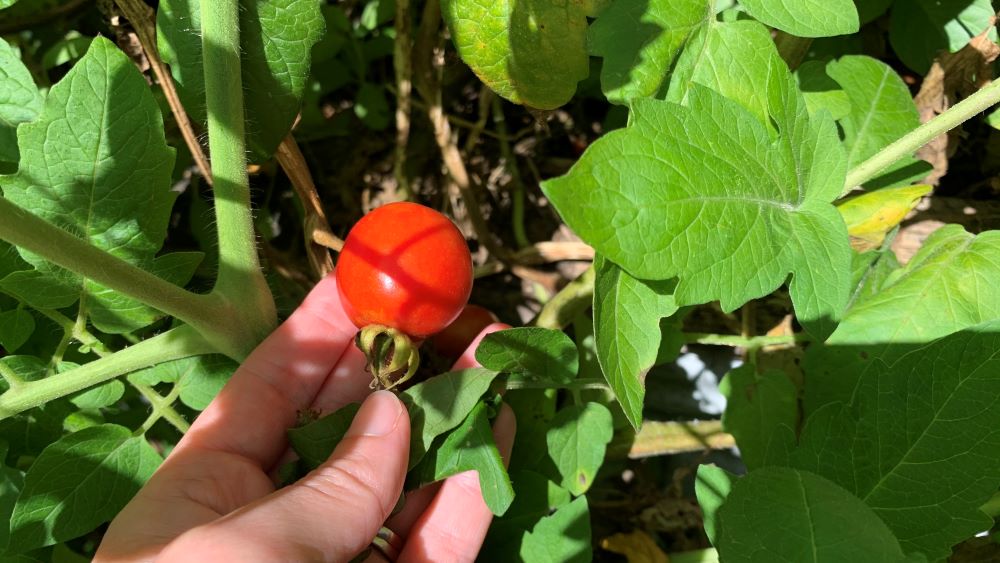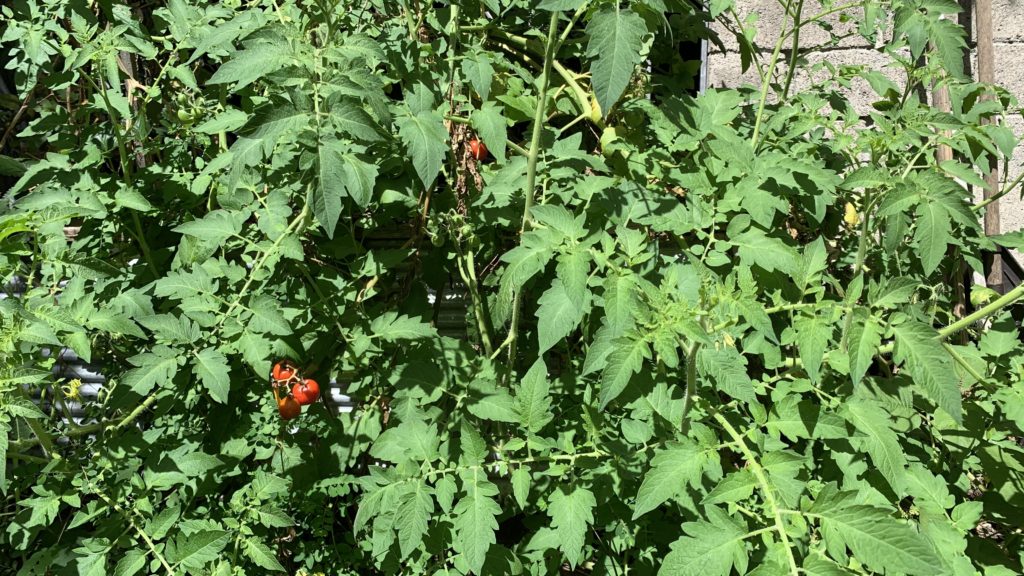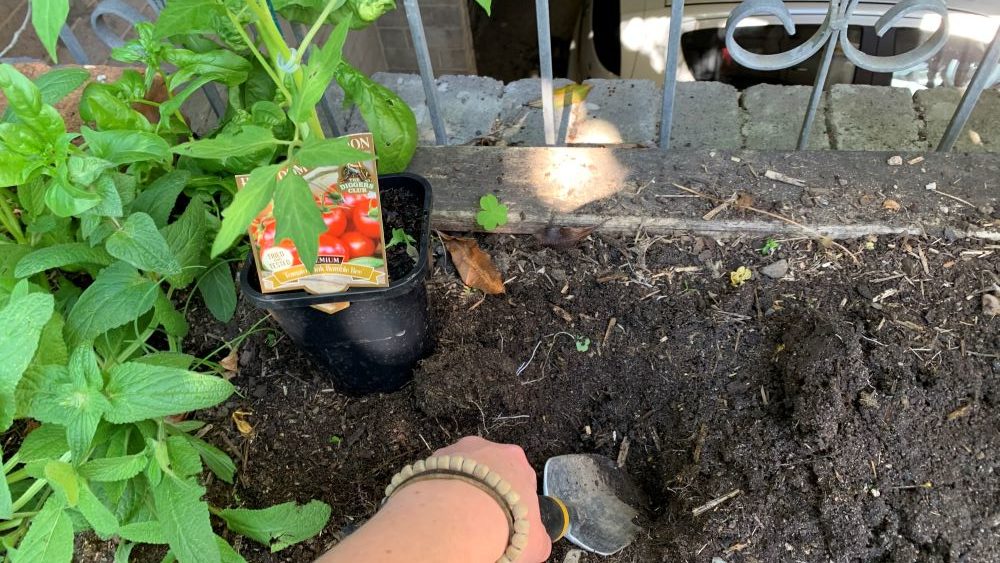Worm castings are great for adding to the soil when planting tomato seeds and seedlings. Worm castings can be mixed into the potting soil or garden beds to add extra organic matter and nutrients. Worm castings can be used to top dress established tomato plants 1-2 times throughout the season.
Worm castings are fantastic for improving the soil, adding structure and water holding capacity. This article will explore how to use worm castings for tomatoes, to make them grow faster and stronger.

Benefits of worm castings for tomato plants – Top 5
Here are the top benefits of worm castings for your tomato plants and why you should consider adding them before planting out your new seedlings this year.
1. Adds organic matter
Adding worm castings will add lots of high quality organic matter. Worm castings are made up of basically ‘worm poop’ which contains a concentration of the nutrients and organic matter broken down by the worms. Depending on what the worms are fed I could contain food scrap particles, broken down straw, hay, fall leaves or even animal manures.
Adding organic matter to your soil will help your tomatoes to grow a healthy root system that is strong and stable. Soft soil that is rich in organic matter will allow the roots to spread far and wide to stabilize the plant while allowing water to drain well and avoiding fungal growth.

2. Adds nutrients
Adding worm castings to your tomato bed will add lots of valuable nutrients that your tomatoes need to thrive. Worm castings will contain a small amount of a range of nutrients including nitrogen, phosphorus, potassium, calcium, zinc and iron.
Worm casting will not burn the roots of your new tomato seedlings because the nutrients will be delivered gently and in small amounts.
3. Increases water holding capacity
Adding worm castings will help the soil to hold water for longer and help your tomatoes to survive the hot, summer months. Worm castings contain lots of organic matter which will help to hold water for a longer time and prevent evaporation.
This is the perfect addition for sandy soils where water can drain away quick before the plant has the time to absorb it.

4. Improves drainage to reduce root rot
Strangely enough, worm castings will also help to improve the drainage in your soil. The particles of broken down organic matter will help to create air pockets to improve drainage for your tomatoes. This will help to prevent water sitting for too long around their roots and causing fungal root rot.
5. Increases the population of good bacteria
Adding worm castings to the soil before planting tomatoes will help to increase the population of good soil bacteria. These bacteria work to break down organic matter in your soil to release the nutrients to your plants. A good soil bacteria population means healthy soil and healthy tomato plants.
How to apply worm castings to tomatoes
Here are a few ways you can apply worm castings to tomatoes and the soil. This is perfect for seeds, seedlings and established plants.
1. Mix worm castings into seed raising mix
You can add worm castings to your seed raising mix before planting seeds to. Worm castings contain small amounts of nutrients which will not affect seed growth and can support the seedlings once they establish. Mix through up to 1/3 worm castings with seed raising mix.
Remember to sieve your worm castings before using them for seeds to remove any large pieces.
2. Mix worm castings into potting soil
Mix worm castings into potting soil before you plant your tomato seedlings. Tomatoes grow great in pots and even better when you add worm castings to the mix. Add up to 1/3 worm castings to potting soil. Choose a good quality potting soil and mix the worm castings through before planting your tomato.
3. Mix worm castings into garden beds
If you are planning on growing your tomatoes in a raised garden bed or in-ground bed worm castings can be mixed directly into the soil. Mix around 1 shovel full of worm castings per square foot of space in your vegetable patch. Gently mix it through with a garden fork and leave it to rest for around 2 weeks.
Adding worm castings will help to add back any nutrients used up by last season’s crop and will add back organic matter. Remember to rotate the location your tomato patch year to year to avoid diseases building up in the soil.

Note: The soil bacteria in the worm castings can reduce the chance of diseases building up in your soil.
4. Top dress established tomato plants
Once your tomato plants have been growing for around 4 weeks you can add a top dressing of worm castings. Simply sprinkle the worm castings around the root zone of the plant. Move the mulch back first so the worm castings make contact with the soil.
Do not dig the worm castings into the soil once your tomato has established. This can damage the tomato roots and kill the plant.
5. (BONUS) Should I spray tomatoes with worm castings?
Many gardeners suggest that worm castings can be diluted into water and sprayed onto the leaves of the tomato plant. The leaves can actually absorb the nutrients to help their growth. For myself, I live in a sub-tropical area where the summers are very humid. Because of this humidity my plants are already at risk of sooty mold growing on their leaves.
Spraying any water or worm castings on their leaves can increase the risk of mold growth. If you plan on doing this, spray the water on the leaves in the morning so there is plenty of time for the leaves to dry.
How to use Worm Castings for Tomatoes | Summary
Worm castings are fantastic for tomatoes and can be applied to established plants or dug through the soil before planting your new seedlings. They add lots of organic matter, a gentle supply of nutrients and a good amount of healthy bacteria. Worm castings work over time so add them each year before planting your tomatoes to get a better crop. Crop production will increase over time as the soil improves.
Happy growing.
I am an accredited practicing dietitian, experienced gardener and a dedicated cook. I love writing and sharing my experience so you can learn from my successes and mistakes.
